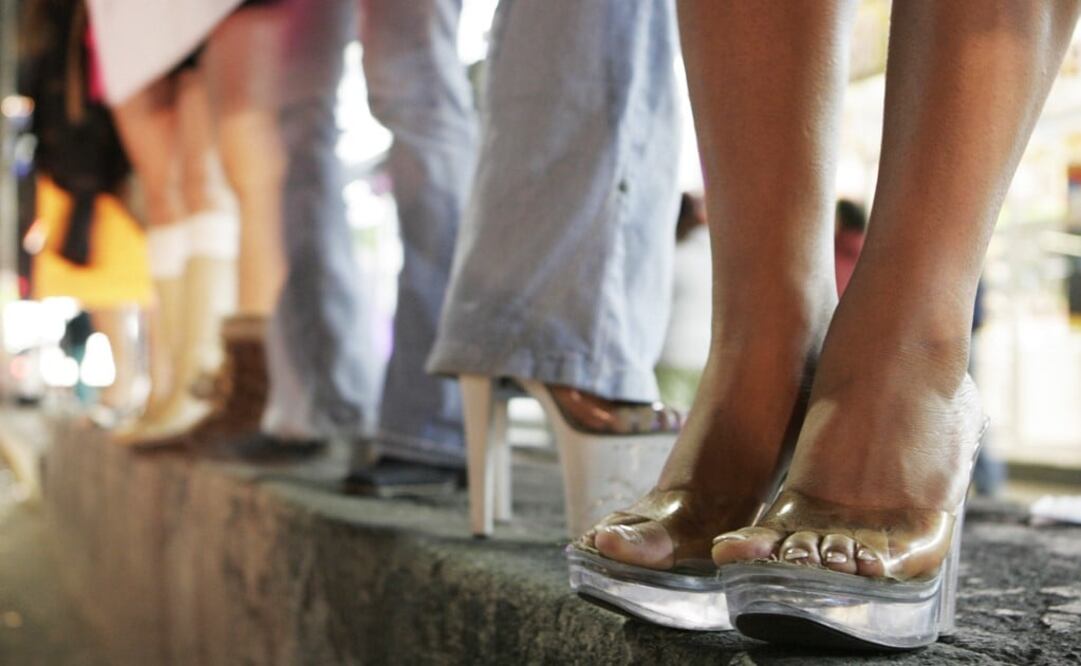Más Información

Hasta 400 mil pesos recibirán familiares de fallecidos en el Tren Interoceánico; deberán presentar boleto para cobrar seguro

Marx Arriaga defiende comités educativos ante ataques de Alito y Salinas Pliego; acusa “presiones” para frenar Nueva Escuela

Sheinbaum: “Nadie es portador de la verdad absoluta de la 4T”; Presidenta reacciona a diferencias de Max Arriaga en la SEP

Grecia Quiroz confirma detención de otro implicado en asesinato de Carlos Manzo; participó en grupo de WhatsApp donde se coordinó el ataque
Mexico
has very few shelters for victims of human trafficking and now they are under threat, as one has recently closed and another is on the brink, following a government crackdown on funding for non-profits but this measure could put vulnerable women at risk.
Several heads of Mexico’s civil society-run trafficking shelters said they have struggled financially for a long time but none had closed or feared to have to cut services after the federal government said it would stop funding non-profits back in February.
The previous administration identified about 8,000 victims of trafficking in the last six years but there is no public data on how many of them stayed at those shelters , also, the United Nations said that management of the shelters had been disorderly.
Last month, President Andrés Manuel López Obrador said helping victims would be a priority , as it was announced the new administration is preparing its anti-trafficking strategy ; nevertheless, activists insist that the closure of these government-funded shelters could endanger lives.
“You can’t take down these spaces overnight,” said Wendy Figuero a, head of the National Network of Shelters whose members run spaces for women who are victims of violence.
“There will be higher rates of femicides and re-victimization of the women that need these spaces of protection ,” she told the Thomson Reuters Foundation .
The President’s office referred questions to the Ministry of Wellbeing , which said civil society organizations had been doing work that the government did not want to do, meaning that the groups had to almost work “miracles” to help vulnerable people .
The ministry also said the government was working on a strategy to prevent and address violence against women and girls and said that “It’s very important to clarify and reiterate that shelters don’t close, they won’t close. It’s the opposite, they will be supported, they will be strengthened,” it said in a statement.
The National Human Rights Commission says there could be between 50,000 and 500,000 human trafficking victims in Mexico , from people forced into prostitution to those forced to work for drug gangs.
No more funding
One shelter in Mexico City , which housed up to 20 victims of trafficking, closed in December after eight years, as it became clear that federal and local governments would stop distributing public resources, according to Teresa Ulloa , who used to run the center.
Unlike shelters for victims of other types of violence, there has never been a clear source of government funding or support for those housing victims of trafficking , activists say.
And funding fears were heightened in February, when President López Obrador said the government would no longer fund civil society groups but instead give money straight to people in need.
For example, Ulloa relied on about MXN $300,000 annually from a government program called “ Social Co-investment” to run the shelter . The program was assigned money in the 2019 budget, but it has not been distributed.
The running costs of Mexico’s human trafficking shelters vary widely, ranging from MXN $400,000 a year to MXN $4 million .
“(Funding) has always been difficult,” said Marian González , a director at the National Institute of Social Development (INDESOL), who has surveyed the country’s trafficking shelters and warned that many now risked having to reduce their services.
Few shelters
The United Nations Office on Drugs and Crime (UNODC) says there are 18 trafficking shelters, six of which are government-run. All are high security, closed-door facilities which do not allow victims to have phones or come and go for safety reasons. The vast majority of the homes are for women and children.
In a house in the southern city of Tapachula , Elsa Simon has cared for women trafficked by their boyfriends, gangs, and bar owners for over a decade but Simon may soon have to close the trafficking shelter , the only such facility in Chiapas , Mexico ’s poorest state.
“There’s no money except from my pocket,” said the 65-year-old, who has had an armed bodyguard since one trafficker came to the shelter demanding to see the woman he had exploited.
“I’m at the point of saying that I won’t carry on.”
On top of her funding problem, Simon ’s shelter is currently empty, and just a handful of women stayed there last year. She says this is because state prosecutors are not doing enough to investigate human trafficking and find victims .
Government data shows that Chiapas , an entrance for thousands of Central American migrants each year, reported one trafficking case in the first two months of 2019, and about 26 in 2018.
The UNODC has a USD $2.9 million grant from the U.S. government’s Mérida Initiative , a security aid program to Mexico and Central America, to help improve standards across trafficking shelters.
UNODC Public Information Officer Felipe de la Torre
said Mexico’s government lacked a robust public policy related to shelters , resulting in disorder around how they are run.
“There’s a huge disparity between how one shelter operates from another,” the U.N. official said.
Victims at risk
There are six shelters run by state and federal government in Mexico City, Colima , and the state of Mexico . Civil society groups say that local and national authorities are obliged to run or fund shelters as laid out by the 2012 trafficking law .
“It’s not about charity, it’s about complying with the law,” said Mariana Wenzel , director of Anthus , which has a trafficking shelter partly-funded by the state of Puebla.
López Obrador
sparked a backlash in February when the Health Ministry withdrew a grant for shelters for female victims of violence . The move was reversed, but Figueroa said the money has not yet been disbursed and next year’s funding was uncertain.
Yet trafficking shelters are not entitled to this cash, and any violence shelter that takes in a trafficking victim can have its funding taken away, according to several shelter directors.
Raising money from private donors to fill the gap left by the government would not be easy, several groups said.
“There isn’t much trust in civil society organizations because there have been abuses by some,” said Iliana Ruvalcaba , head of non-profit Pozo de Vida that runs a trafficking shelter in the capital, propped up by private donors at home and abroad.
A failure by trafficking shelters to secure funding could even have deadly consequences, said María, a survivor who was sex trafficked by an older man in her first year at university.
She arrived at Casa Anthus , 18-years-old, with her face and body covered in bruises, and unable to walk properly. The shelter provided healthcare, counseling, and legal advice , and two months ago, she graduated from law school .
“When I arrived I didn’t want to know anything (...) I was disappointed with life,” said Maria, asking not to use her real name. “When I left, I left with eagerness to move forward.”
“If there weren’t shelters like Casa Anthus , I think that lots of victims would fall into the same traps again, or even their lives would be at risk.”
gm
Noticias según tus intereses
[Publicidad]
[Publicidad]











